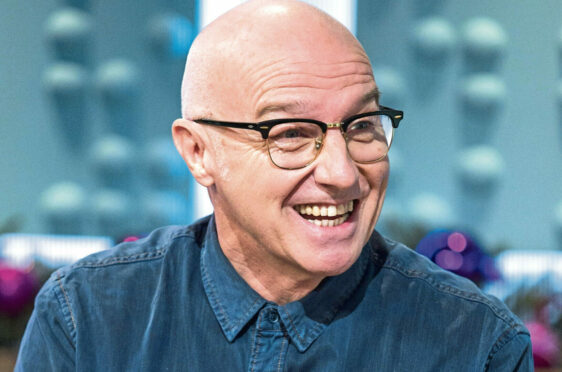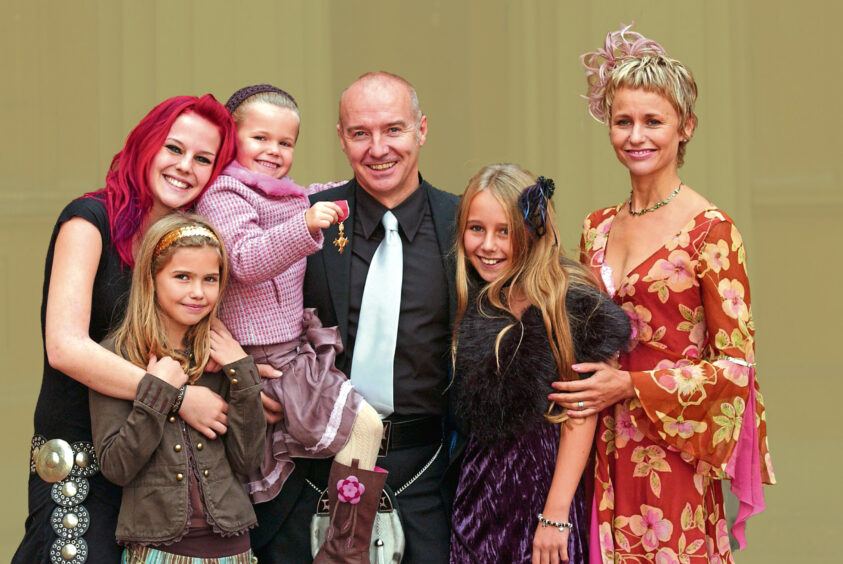
Midge Ure had spent his life on stage but when lockdown forced him off it, he feared it had also robbed him of his distinctive voice.
Having ripped it up with the Rich Kids, rocked out with Thin Lizzy and hit the high notes with Ultravox across a 50-year career, he had spent a year away from the microphone when he began preparations for a lockdown gig. But when he opened his mouth and tried to sing, out came a strange nothingness he didn’t recognise.
“A year into it, we attempted one of those recorded gigs in an empty room that was to be broadcast on the internet and when we went into rehearsals, I couldn’t sing,” he recalled. “For the first time in my life, I had taken a year off not singing in anger.
“When I do a gig, it’s like going to a football match and shouting my head off for an hour and a half. A lot of it is way up there, full on; I don’t know how to hold back. I don’t do voice warm-ups or any of the sensible things that proper singers do, I never have, so I went straight back into it and out came this thing, like I’d been possessed or abducted by aliens; it wasn’t my voice that came out. At that point I thought it was well and truly over.
“Then I realised what I was trying to do was the equivalent of running a marathon without any training. This poor muscle was being hammered. It just wasn’t there like it always has been and it was due to lack of use. I’d done a little bit of singing in the house but that’s not the same as standing on stage giving it full pelt.
“I realised I had to do a few songs, then stop. Five the next time, then stop, and very quickly I worked it up to a half hour, then an hour, then 90 minutes and now it’s not a problem.”
Midge Ure is back on tour with Band Electronica but touring in the post-pandemic world is rife with issues and, he admits, feels very precarious.
“We are all on a tour bus, including the entire crew, all crammed in there together to try to keep the ticket prices down,” he explained. “We sleep on the coach, too. It only takes one person to catch Covid and the whole thing grinds to a halt. There’s no insurance any more – no one will take on insurance because they don’t know what the hell is happening, so it’s a bit of a nightmare.
“I still take the precautions of wearing a mask after the gig in case I’m meeting people – whether it’s real or psychological, it doesn’t matter, I do it. For those two and a half years or whatever it was, this enforced retirement and enforced removal from each other was a bit of a shocker, particularly for an artist who has always toured, and always been out there since I was 13 and 14 when I played at the weekends.
“I always took it for granted that it would be there and then it wasn’t. There’s an element of relief – and touring is not 100% back but it’s starting to come back – mixed with elation of going back out there, and that totally outweighs the risk of what it would be like to catch Covid.”
The Voice & Visions Tour is giving Ure the chance to reflect on an important period of his career. It is a delayed celebration of the 40th anniversary of the Ultravox albums, Rage In Eden and Quartet, his second and third records with the band that were released in 1981 and 1982.
“For a start, I had to download the albums because over the years I have given away my vinyl and CDs. In theory, I was going to do both albums in their entirety but in practice I went back and listened to them and some just didn’t resonate any more. It was 40 years ago and I’m a different person. Other songs have made the transition to live really easily.
“I didn’t want to be standing on stage pretending I was enjoying songs that didn’t do it for me, so I cherrypicked the ones that transitioned well.”
That period of music history was as much a culture and a way of life as it was a soundtrack. For the Quartet album, Ultravox enlisted The Beatles’ legendary producer George Martin, which proved to be the memorable experience they imagined it would be.
“We had worked with Conny Plank, the German avant-garde electronic producer, on the Vienna and Rage In Eden albums but now we wanted to do something very different and George was probably one of the only people on the planet who could tell Ultravox what to do; to intervene and say I think you’re going up your own backsides here so let’s rethink it,” Ure explained. “He was an old-school producer, sitting around a piano and working out arrangements, whereas Conny was very much an engineer producer who worked on sounds and atmospheres but never had anything to do with the arrangements, so it was an eye opener for us.
“George was a lovely man; a gentleman and a raconteur. And it wasn’t just George, it was George and his engineer Geoff Emerick. They did Sgt Pepper on a four-track recording machine, so for any musician to be in a room with those two guys was a real pinch-me moment. I was recording the vocals to Hymn and George said it didn’t sound very good. He added, ‘Yeah but it’s not you, it’s the mic.’
“He asked Geoff if they had John Lennon’s mic with them and out came this wooden box and this valve mic, this big old thing, and I ended up singing into John’s mic. It doesn’t get any better.”
Ure brings the tour to Scotland for three dates, including a hometown gig at the Barrowland Ballroom in Glasgow. “There’s something about the home crowd. It’s always brilliant and I’m looking forward to it.”
Two significant milestones are coming up this year and next. Live Aid will turn 40 in 2024 and Ure remains a trustee. At the moment there is nothing planned for the anniversary, and neither does he have any celebrations in mind for his 70th birthday, which is hurtling towards him this autumn.
“As long as I make it,” he laughed. “It’s just a number and I really don’t care. We’re the generation who grew old but never grew up. We still like our music, we still go to concerts, and if you go to a festival these days you’ll see grandads walking hand in hand with their grandchildren and they’ll both be wearing tutus. That says it all.
“We didn’t hit 30 and start putting on a three-piece suit and forgetting everything that had happened before; we took it with us, much to the chagrin of the younger generations.
“As long as I’m capable of doing this and still have the desire to do this – and people still have the desire to hear it – I’ll carry on. I want to be like George Martin, never hanging up the headphones or guitar. I’ll fall over with it strapped to me.”
Midge Ure – The Voice & Visions Tour: Usher Hall, Edinburgh; Barrowland, Glasgow; Music Hall, Aberdeen: May 17, 18, 20

Enjoy the convenience of having The Sunday Post delivered as a digital ePaper straight to your smartphone, tablet or computer.
Subscribe for only £5.49 a month and enjoy all the benefits of the printed paper as a digital replica.
Subscribe © Shutterstock
© Shutterstock